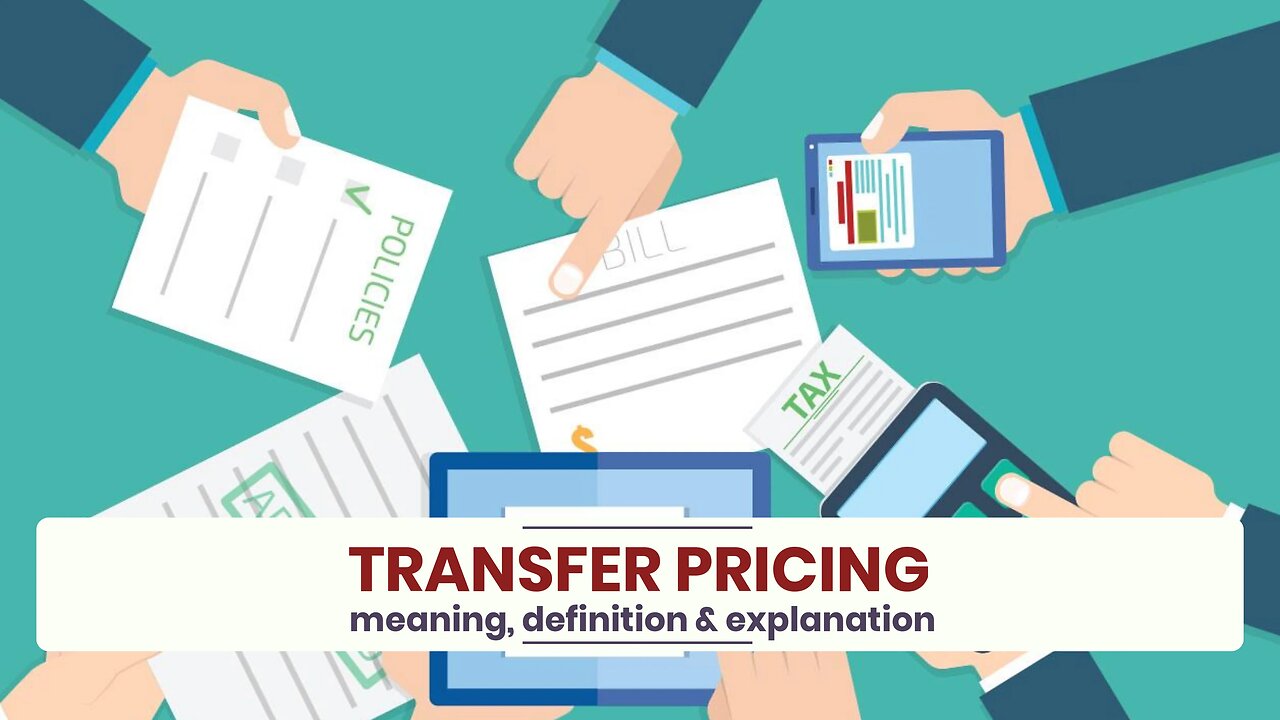Premium Only Content

What is TRANSFER PRICING?
✪✪✪✪✪
http://www.theaudiopedia.com
✪✪✪✪✪
What does TRANSFER PRICING mean? TRANSFER PRICING meaning - TRANSFER PRICING definition - TRANSFER PRICING explanation. What is the meaning of TRANSFER PRICING? What is the definition of TRANSFER PRICING? What does TRANSFER PRICING stand for? What is TRANSFER PRICING meaning? What is TRANSFER PRICING definition?
In taxation and accounting, transfer pricing refers to the rules and methods for pricing transactions between enterprises under common ownership or control. Because of the potential for cross-border controlled transactions to distort taxable income, tax authorities in many countries can adjust intragroup transfer prices that differ from what would have been charged by unrelated enterprises dealing at arm’s length (the arm’s-length principle). The OECD and World Bank recommend intragroup pricing rules based on the arm’s-length principle, and 19 of the 20 members of the G20 have adopted similar measures through bilateral treaties and domestic legislation, regulations, or administrative practice. Countries with transfer pricing legislation generally follow the OECD Transfer Pricing Guidelines for Multinational Enterprises and Tax Administrations in most respects, although their rules can differ on some important details.
Where adopted, transfer pricing rules allow tax authorities to adjust prices for most cross-border intragroup transactions, including transfers of tangible or intangible property, services, and loans. For example, a tax authority may increase a company’s taxable income by reducing the price of goods purchased from an affiliated foreign manufacturer or raising the royalty the company must charge its foreign subsidiaries for rights to use a proprietary technology or brand name. These adjustments are generally calculated using one or more of the transfer pricing methods specified in the OECD guidelines and are subject to judicial review or other dispute resolution mechanisms.
Although transfer pricing is sometimes inaccurately presented by commentators as a tax avoidance practice or technique, the term refers to a set of substantive and administrative regulatory requirements imposed by governments on certain taxpayers. However, aggressive intragroup pricing – especially for debt and intangibles – has played a major role in corporate tax avoidance, and it was one of the issues identified when the OECD released its base erosion and profit shifting (BEPS) action plan in 2013. The OECD’s 2015 final BEPS reports called for country-by-country reporting and stricter rules for transfers of risk and intangibles but recommended continued adherence to the arm’s-length principle. These recommendations have been criticized by many taxpayers and professional service firms for departing from established principles and by some academics and advocacy groups for failing to make adequate changes.
Transfer pricing should not be conflated with fraudulent trade mis-invoicing, which is a technique for concealing illicit transfers by reporting falsified prices on invoices submitted to customs officials. “Because they often both involve mispricing, many aggressive tax avoidance schemes by multinational corporations can easily be confused with trade misinvoicing. However, they should be regarded as separate policy problems with separate solutions,” according to Global Financial Integrity, a non-profit research and advocacy group focused on countering illicit financial flows.
Over sixty governments have adopted transfer pricing rules, which in almost all cases (with the notable exceptions of Brazil and Kazakhstan) are based on the arm's-length principle. The rules of nearly all countries permit related parties to set prices in any manner, but permit the tax authorities to adjust those prices (for purposes of computing tax liability) where the prices charged are outside an arm's length range. Most, if not all, governments permit adjustments by the tax authority even where there is no intent to avoid or evade tax. The rules generally require that market level, functions, risks, and terms of sale of unrelated party transactions or activities be reasonably comparable to such items with respect to the related party transactions or profitability being tested....
-
 1:26
1:26
The Audiopedia
1 year agoWhat is MOTTO?
50 -
 10:32
10:32
Nikko Ortiz
13 hours agoFunniest Fails Of The Month
14.7K3 -
 2:04:11
2:04:11
Side Scrollers Podcast
16 hours agoCracker Barrel CANCELS Rebrand + OG YouTuber Has Brain Tumor + More | Side Scrollers IN STUDIO
23.9K4 -
 19:26
19:26
GritsGG
9 hours agoChat Picked My Hair Color! All Pink Loadout & Operator Challenge!
2.24K3 -
 1:27:34
1:27:34
TruthStream with Joe and Scott
3 days agoArchitect Richard Gage: 911 truths and more #482
7.61K3 -
 3:47:17
3:47:17
The Pascal Show
17 hours ago $1.05 earnedBREAKING! Mass Shooting At Annunciation Church In Minneapolis Multiple Shot
18K7 -
 LIVE
LIVE
Lofi Girl
2 years agoSynthwave Radio 🌌 - beats to chill/game to
214 watching -
 2:02:49
2:02:49
Inverted World Live
8 hours agoAnnunciation Catholic School Shooting and Spiritual Warfare w/ AK Kamara | Ep. 99
194K27 -
 10:10
10:10
Robbi On The Record
3 days agoHollywood’s Hidden Messages: Predictive Programming & What’s Next
24.5K31 -
 4:43:34
4:43:34
Drew Hernandez
13 hours agoLGBTQ TERRORIST EXECUTES CATHOLIC KIDS IN MINNEAPOLIS
21.8K18